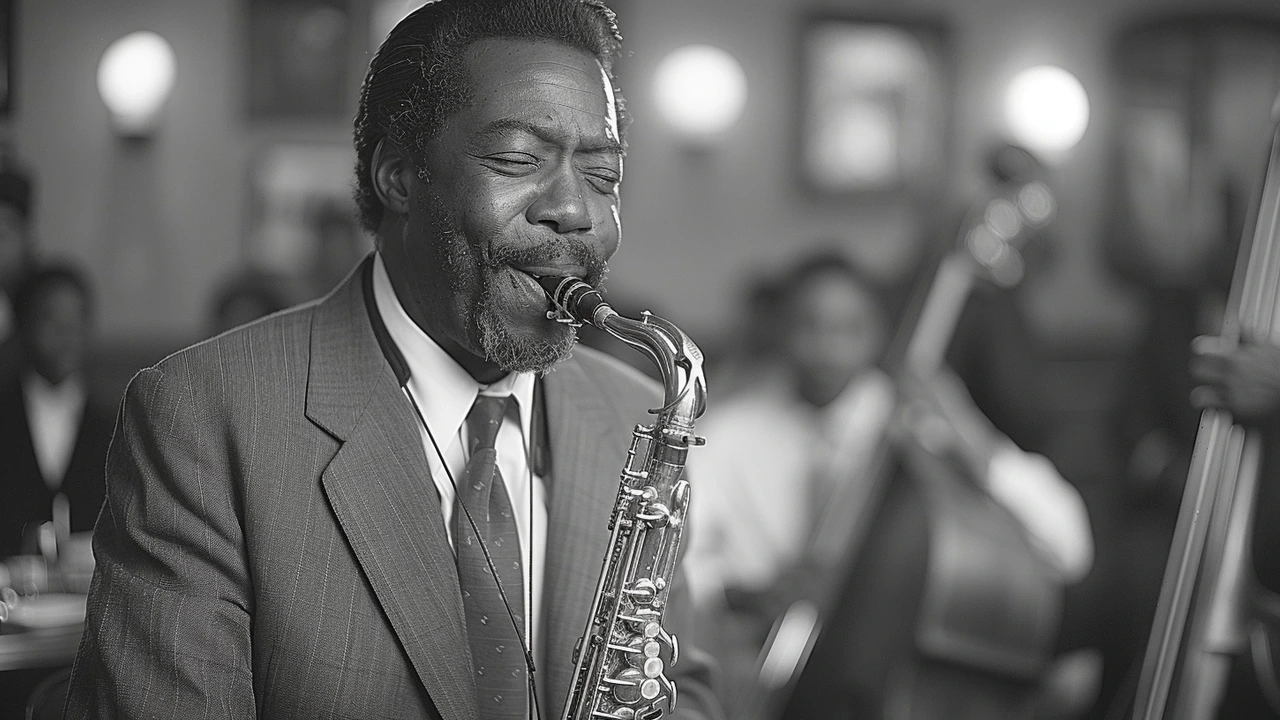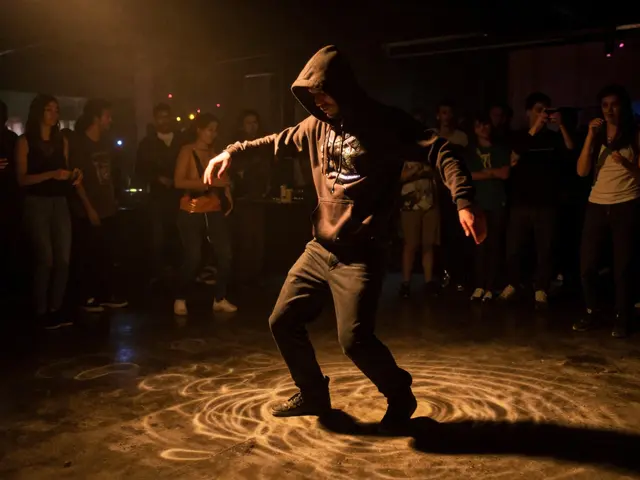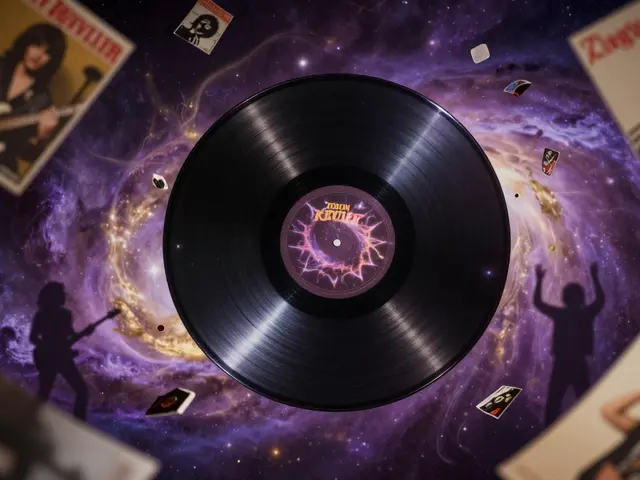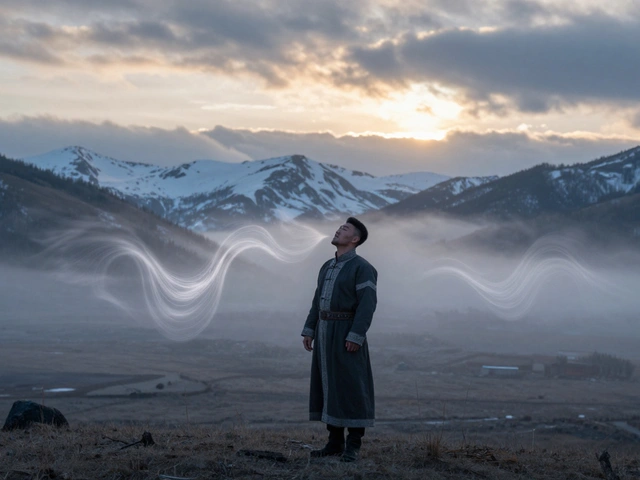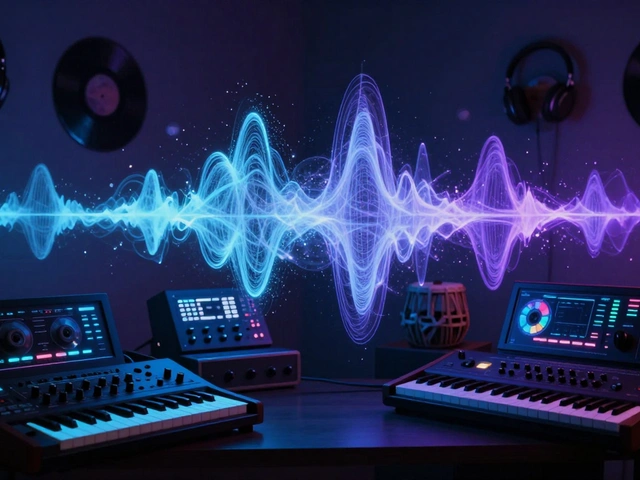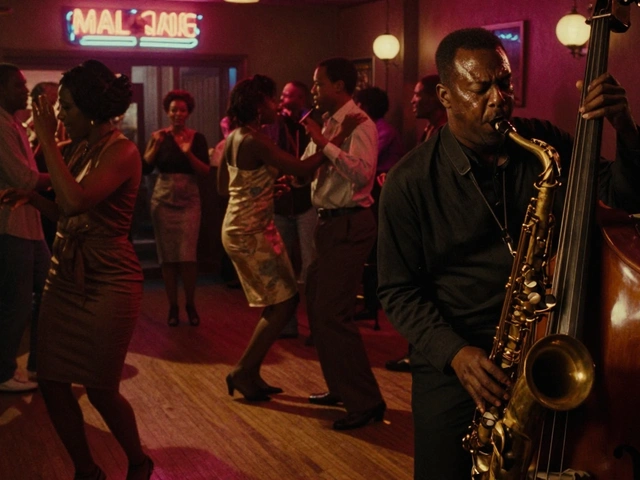Jazz is a music genre that has swept across the world, enchanting listeners with its distinct rhythms and improvisational flair. Originating from the rich cultural tapestry of New Orleans, jazz has deep roots in African American history. As you dive into the history of jazz, you'll discover how it developed from spirituals, blues, and ragtime into a genre characterized by its spontaneous beauty.
From legends like Louis Armstrong and Duke Ellington to contemporary artists pushing the boundaries today, jazz has a diverse array of influential musicians. These artists each brought something unique to the genre, making it what it is today.
Jazz is not monolithic; it branches into various genres like bebop, swing, and fusion, each with its own characteristics and flair. Understanding these genres will enhance your appreciation and enjoyment of jazz music.
Modern music owes much to jazz. Its influence is evident in many contemporary genres, highlighting its lasting impact.
If you're new to jazz, there are many ways to start exploring this vibrant world. Whether it’s listening to classic records, attending live performances, or even diving into documentaries about jazz history, there is no shortage of ways to immerse yourself in this dynamic genre.
- The Birth of Jazz: Historical Roots
- Influential Jazz Musicians
- Exploring Jazz Genres
- Jazz’s Impact on Modern Music
- How to Appreciate and Explore Jazz Today
The Birth of Jazz: Historical Roots
Jazz, an iconic and expressive music genre, had its beginnings in the vibrant city of New Orleans, Louisiana, around the late 19th and early 20th centuries. This port city was a melting pot of cultures, where African, Caribbean, and European traditions mingled freely. The rich blend of these diverse influences formed the fertile ground from which jazz sprouted. It began with the unique syncopation and rhythmic patterns found in African music, married to the harmonic structures often associated with European classical music.
Slavery played a crucial role in the cultural makeup of New Orleans. Enslaved Africans brought their musical traditions with them, and these traditions began to evolve uniquely in the Americas. African American spirituals, work songs, and field hollers became the foundation components of jazz. One of the earliest forms of jazz music was ragtime, characterized by its syncopated, or 'ragged' rhythm. Scott Joplin's famous ragtime compositions, like "The Entertainer," are still cherished today.
The term 'jazz' itself has an unclear origin. Some suggest it was slang from the African American communities while others believe it might have come from musical performances in New Orleans brothels. Regardless of its origins, the essence of jazz gained momentum in venues across the city, including bars, dance halls, and 'speakeasies' during the Prohibition era.
Early jazz musicians like Buddy Bolden, often considered the 'first man of jazz,' played a pivotal role in this formative period. Another notable figure was Louis Armstrong, whose innovative trumpet playing and unique vocal style left a lasting impact on the genre. Armstrong, born and raised in New Orleans, carried the torch for jazz as he ventured to larger cities like Chicago and New York, helping spread the form across the nation.
"If you have to ask what jazz is, you'll never know." — Louis ArmstrongAs jazz evolved, it absorbed various cultural inputs, becoming a distinct and recognized genre by the 1920s. This era, often referred to as the 'Jazz Age,' saw the music catapult into popular culture. The imaginative improvisations of jazz players became a symbol of creativity and expression in an era defined by transformation and new beginnings.
Jazz was closely tied to the social fabric of the time. It was born in a segregated South but transcended barriers to become a universal language of freedom and emotion. Historically significant neighborhoods like Treme in New Orleans served as melting pots where musicians could exchange and develop their craft. The Great Migration of African Americans from the South to urban centers in the North also played a significant role in spreading jazz across the country and influencing other regional styles.
Jazz continues to be an evolving genre that respects its roots while always pushing the boundaries of what music can be. Understanding its rich history not only deepens appreciation for its complexity and beauty but also offers insight into the cultural and social dynamics that shaped it.
Influential Jazz Musicians
When diving into the world of jazz, a few towering figures come to mind. One can't discuss jazz without mentioning Louis Armstrong. Known as the 'Ambassador of Jazz,' Armstrong's infectious smile and soulful trumpet play are etched into the minds of music lovers globally. Armstrong was not just a talented musician but also a charismatic entertainer. His song 'What a Wonderful World' continues to touch people’s hearts. Louis Armstrong's innovations in musical phrasing and improvisation have left an indelible mark on jazz and popular music.
Duke Ellington, another icon, made profound contributions with his masterful compositions and orchestration. He led his band for over 50 years, producing classics like 'Take the A Train'. Ellington's ability to blend complex rhythms and harmonies into natural, flowing music helped push jazz into a respected art form. As he famously said,
'Music is my mistress, and she plays second fiddle to no one.'His approach to music was philosophical, seeing it as an avenue to tell stories and express personal and social narratives.
Charlie Parker, fondly known as 'Bird,' revolutionized jazz with his virtuosic saxophone play and innovative ideas. Bird's rapid-fire solos and complex harmonic structures helped define the bebop era. His collaborations with Dizzy Gillespie and others pushed the genre into new territories, embodying the quintessential jazz spirit of exploration and innovation. Parker's life was tumultuous and tragically short, but his impact on jazz is everlasting.
Speaking of Dizzy Gillespie, his contributions to jazz, especially in the realm of bebop and Afro-Cuban jazz, cannot be overstated. Gillespie's trumpet playing was marked by its virtuosity and his characteristic bent horn and puffed cheeks made his performances unmistakable. His infectious personality and humor made him a beloved figure in the jazz world. He once remarked,
'It's taken me all my life to learn what not to play.'This statement reflects the deep understanding of restraint and expression honed over decades of performance and composition.
John Coltrane, with his evocative saxophone playing, pushed the boundaries of jazz further into the realms of modal and free jazz. His album 'A Love Supreme' is considered one of the most significant records in jazz history. Coltrane's relentless pursuit of spiritual and musical transcendence made his work resonate on a profoundly emotional level. His explorations in 'Giant Steps' set new standards for technical and improvisational excellence in jazz.
Lastly, Miles Davis deserves special mention. Davis was a pioneer in several jazz styles, including cool jazz, hard bop, and jazz fusion. Albums like 'Kind of Blue' and 'Bitches Brew' showcase Davis's ability to innovate continually and reshape jazz music. His quintets, featuring young musicians like Herbie Hancock and Wayne Shorter, were hotbeds of creative development. Miles Davis's career-spanning contributions made him an enduring icon of jazz.
These influential figures are indispensable to understanding jazz music. They were trailblazers in their time and left a legacy that continues to inspire and shape the music world today.
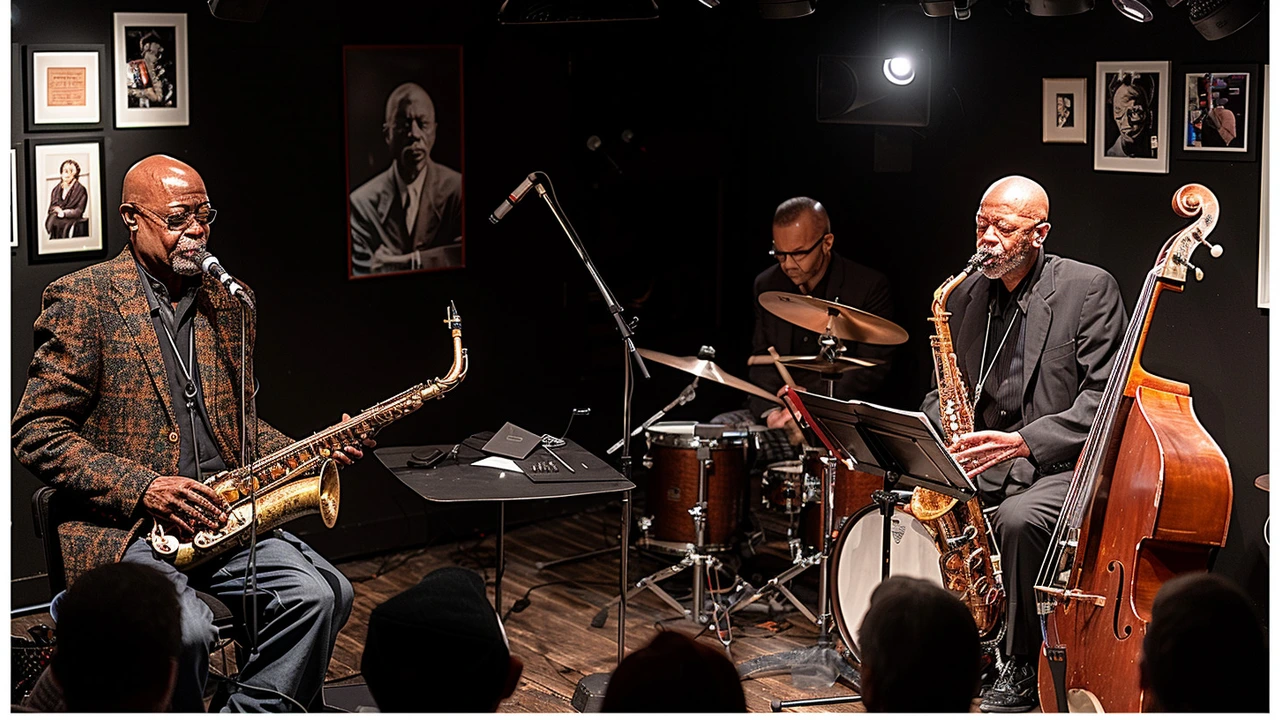
Exploring Jazz Genres
Jazz, with its rich history and intricate musicianship, is not a one-size-fits-all genre. It encompasses a wide range of styles, each bringing its own flavor and complexity. Whether you’re drawn to the fast-paced energy of bebop or the smooth, laid-back vibes of cool jazz, there’s something in the world of jazz for every palate.
One of the most notable jazz genres is bebop. Emerging in the 1940s, bebop was a response to the big band swing era. Musicians like Charlie Parker and Dizzy Gillespie pushed boundaries with their complex chord progressions and fast tempos. Bebop was more than dance music; it was a showcase for the artistry and technical skill of the musicians.
Cool Jazz
If bebop was the fiery youth of jazz, then cool jazz was its sophisticated elder sibling. Cool jazz emerged in the late 1940s and 1950s as a more relaxed, smooth, and accessible variant of bebop. Miles Davis's album “Birth of the Cool” is a seminal work in this genre. Cool jazz often features laid-back tempos, muted tones, and an overall sense of calm.
“Cool means never seeing Red.” – Leonard Feather, jazz critic and composer.
Post-bop and hard bop are other significant genres that evolved from bebop. Hard bop incorporates elements of rhythm and blues, gospel, and blues, creating a soulful and intense listening experience. Art Blakey and Horace Silver were pioneers of this genre, bringing a raw and emotive energy to their performances.
Free Jazz
In the 1960s, a new genre known as free jazz began to take shape. This avant-garde form of jazz eschewed traditional structures and embraced improvisation to its fullest extent. Musicians like Ornette Coleman and John Coltrane were at the forefront of this movement, exploring new musical territories and expressing a wide range of emotions through their free-form compositions.
Fusion jazz, emerging in the late 1960s and 1970s, combines jazz with other musical styles, notably rock and funk. This genre is known for its use of electric instruments and incorporation of modern rhythms. Miles Davis's “Bitches Brew” is often cited as a pioneering fusion album. Fusion brought jazz to a new audience, blending the complexity of jazz with the energy of rock.
Each of these genres has contributed to the vast mosaic that is jazz music. Understanding their unique characteristics not only enhances appreciation for jazz but also provides insight into the cultural and historical contexts from which they emerged. Whether you’re a seasoned jazz enthusiast or just beginning to explore this rich musical world, delving into these genres will undoubtedly deepen your connection to the art form.
Jazz’s Impact on Modern Music
Jazz has left an indelible mark on modern music, influencing a wide array of genres from rock to hip-hop. The genre's emphasis on rhythm, improvisation, and collaboration has permeated various musical styles, making jazz a fundamental building block in the world of contemporary music.
One of the most significant contributions of jazz is its rhythmic complexity. The syncopated rhythms found in jazz have been adopted by many genres, enhancing the texture and feel of popular music. For example, elements of jazz can be heard in the intricate drum patterns of hip-hop tracks and the improvisational solos in rock music. This blending of styles enriches modern music, creating a tapestry of sound that appeals to diverse audiences.
Moreover, jazz's tradition of improvisation has had a profound influence on modern musicians. Artists like John Coltrane and Miles Davis pushed the boundaries of jazz, encouraging musicians of other genres to experiment and innovate. Improvisation allows for a degree of personal expression and creativity that is unrivaled in many other genres. This spirit of innovation is crucial for the development of new musical styles and keeps the art form continually evolving.
Jazz has also influenced modern music through its harmonic complexity. The sophisticated chord progressions and modal structures of jazz have been incorporated into many contemporary songs, adding depth and richness. Musicians across genres study jazz theory to enhance their understanding of music and to broaden their compositional skills. This cross-pollination of ideas leads to more complex and engaging music.
“Jazz is the only music in which the same note can be played night after night but differently each time.” - Ornette Coleman
In addition, jazz has had a cultural impact, breaking down barriers and bringing people together. The collaborative nature of jazz ensembles, where each musician contributes their unique voice, mirrors the collaborative nature of modern music production. This teamwork fosters a sense of community and shared purpose, transcending cultural and social divides.
Jazz festivals around the world, such as the Montreux Jazz Festival and the New Orleans Jazz & Heritage Festival, celebrate this rich genre and its impact on other music styles. These festivals draw artists from diverse backgrounds, showcasing how jazz has influenced many musical traditions. They also provide a platform for new musicians to explore and innovate, ensuring that the influence of jazz continues to grow.
The recording techniques pioneered in jazz, such as live album recordings and extended solos, have shaped the way music is produced today. These techniques offer a more authentic and raw listening experience, capturing the spontaneity and energy of live performances. This approach has been embraced by many modern recording artists who seek to bring an element of authenticity to their music.
Ultimately, the impact of jazz on modern music is vast and multifaceted. By influencing rhythm, harmony, improvisation, and culture, jazz has not only shaped the sound of contemporary music but has also enriched its emotional and intellectual depth. Whether you're aware of it or not, the spirit of jazz is present in much of the music we enjoy today, making it an essential part of our musical landscape.

How to Appreciate and Explore Jazz Today
Appreciating and exploring jazz today is a journey filled with rich sounds and history. To start, it’s important to dive into the roots of this art form. Listen to the classics by artists like Louis Armstrong, Billie Holiday, and Miles Davis. Their music provides a foundational understanding of jazz. As you listen, pay attention to the improvisations and how each artist adds their unique touch to their music. This is the essence of jazz – its freedom and creativity.
Attending live jazz performances is one of the best ways to truly experience this genre. Cities like New York, New Orleans, and Chicago are known for their vibrant jazz scenes. Clubs like the Blue Note in NYC or Preservation Hall in New Orleans offer a chance to hear some of the best live jazz. Seeing artists perform live, you can feel the energy and passion that go into every note. Plus, many clubs have intimate settings, making the music feel personal and immersive.
If live performances aren't accessible, consider listening to jazz radio stations or streaming services that specialize in jazz. Many platforms have curated playlists that feature a mix of classic and contemporary artists. This will help you explore a variety of styles and find what resonates with you. Spotify, for instance, has extensive jazz collections, or you can tune into radio stations like WBGO, which is dedicated to jazz broadcasting.
Another great way to deepen your appreciation is to watch documentaries and read books about jazz history. Films like “Ken Burns: Jazz” provide an in-depth overview of the genre’s evolution. Books such as “Reading Jazz” by Robert Gottlieb or “The History of Jazz” by Ted Gioia offer insightful perspectives on jazz’s development and its cultural impact. Learning about the genre’s history and the lives of its iconic figures adds a new layer of understanding to the music you hear.
One way to interact more actively with jazz is by learning an instrument. Instruments like the saxophone, trumpet, or piano are integral to jazz. Taking lessons or self-teaching through online resources can help you appreciate the skill and creativity involved in jazz music. Many online platforms offer courses that specifically focus on jazz techniques and styles.
If you have a local jazz scene, get involved! Community centers, clubs, and music schools often have events or workshops where you can meet fellow jazz enthusiasts and musicians. Joining these groups can enhance your experience and provide opportunities to learn and perform.
For those who prefer a more academic approach, enrolling in a jazz appreciation course can be incredibly rewarding. Many universities and colleges offer courses on jazz history, theory, and performance. These classes can offer a structured and comprehensive understanding of jazz music.
Wynton Marsalis once said, "Jazz music is the power of now. There's no script. It's conversation." His words capture the essence of jazz – being present and embracing the moment. This mindset is crucial when exploring jazz. Don't rush the process; enjoy each new discovery and let the music speak to you.

